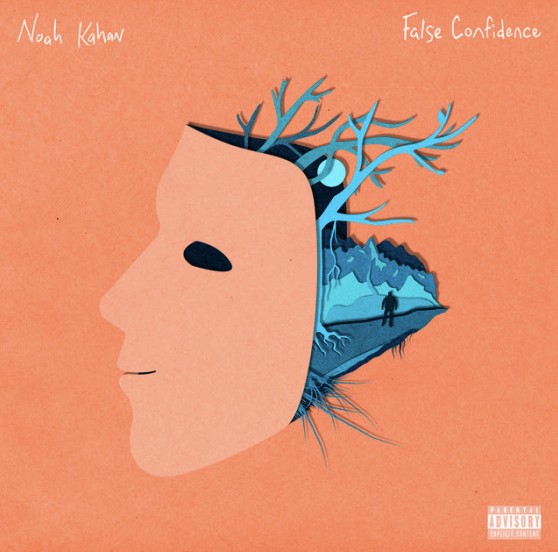Thursday, April 24
“False Confidence”: A Reflection of Reality?
Angel Xin '26 (News Editor) in Arts | January 13, 2023

I discovered the song “False Confidence” by Noah Kahan during Thanksgiving break thanks to Spotify’s recommendations. At the very beginning, this song was a part of my workout playlist due to its catchy lyrics and unpredictable procession of rhythm, but as I kept on playing it, I began to see the words form a story. In fact, I felt that the personal battles that Kahan conveyed in his lyrics strongly resonated with those of teenagers today.
Kahan starts off with the line, “Don't take yourself so seriously / Look at you all dressed up for someone you never see,” which is continualy repeated later in the song. This line rings especially true for us “screenagers,” a term used to describe teenagers with intense addictions to their electronic devices. With increased use of technology comes dependence on social media, which has numerous other side effects: students begin to normalize the highly filtered lives of social media influencers, and by reposting similar aesthetic content, they themselves become the perpetrators of a culture of faking one’s life. By dressing up for likes and comments, we lose an essential part of who we are. The singer soon picks up the pace in the second stanza of the song, with “And I wonder why I tear myself down,” creating a steep contrast with the following line, “Surrender yourself.” I interpret the tearing down of oneself as the surrendering of personal identity, the way we give up who we are to fit in. Hearing this line, I immediately thought of Lawrenceville and the sadness it would bring me if the people around me lost their spark and distinct identity. However, I also have faith in my peers’ ability to uphold who they are, given the diversity and strong support systems on campus. The song then returns to a slow rhythm in the next stanza, but then builds up the tension again after once again repeating the line, “Surrender yourself.” I personally interpret the ever-changing pace and unpredictability of the piece as the mood fluctuations and inconsistent identities of teens today. Yet, despite these irregularities, the hope of “[waking] up young again” was constant. This is especially true for young artists, who have yet to find their unique voice and often rely on attaching their music to popular onlinetrends.
After munching on the lyrics for a while, I felt as if I rediscovered something new. This song has become more than a combination of pitches that forces me to sweat; rather, I see it as an epitome of teenage struggles. In the piece, Kahan recounts the obstacles that he faced as an artist concerning age, self-doubt, and authenticity, while encouraging his audience to stay true to themselves.
Related Articles
- Mirror, Mirror, on the Wall... Who’s the Most Hated of Them all? Melina Kyriakopoulos ’27
- L Factor or L moment? Lawrentians Take the Stage Celestine Sutter ’27
- Spring Orchestra Concert Vincent Jie ’27
- Shedding Light on Julius Caesar Anton Popowitz ’26
- Threaded Up Thursdays: Intertwining Soul and Style Melina Kyriakopoulos ’27
Recent Articles
- Announcing: Valedictorian, Aurelian Speakers, and Faculty Speaker Sophie Liu ’27
- Senior Profile: Sophie Cheng ’25 Katherine Qiu ’27
- Debunking the Dining Hall Debate: Is Lawrenceville’s Dining Really That Bad? Isabelle Lee ’27
- Welcoming Our New VPs for 2025-2026 Sophie Liu ’27
- A Sweet Return: Melba Reopens with New Flavors and Community Spirit Ella Song ’27